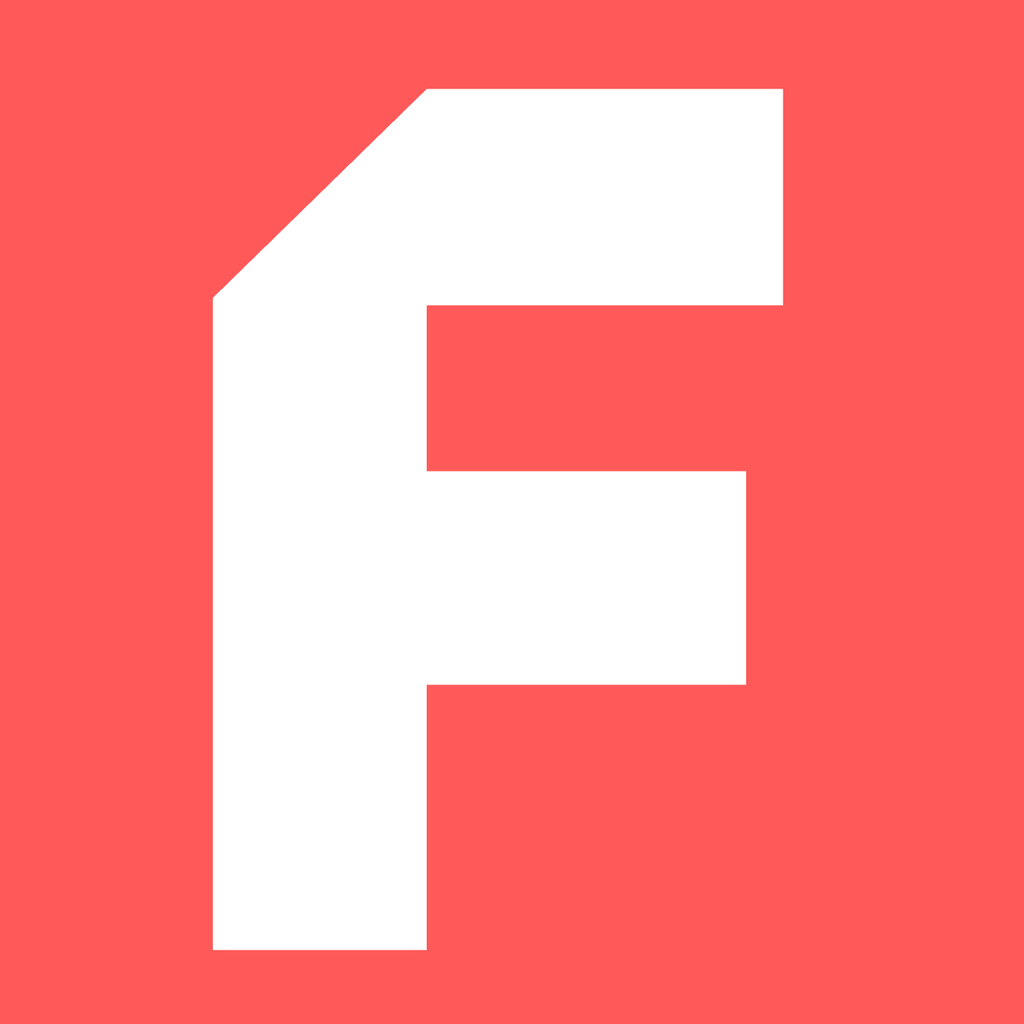How Manu Grew Aceternity UI to $80K/Month: A Landing Page Toolkit for Developers
How Manu Grew Aceternity UI to $80K/Month: A Landing Page Toolkit for Developers
Nov 15, 2024


Manu Arora
Manu Arora
⏳ 5.5 min
⏳ 5.5 min
Revenue/month
Revenue/month
$80,000
$80,000
$80,000
No. of founders
No. of founders
1
1
1
Startup costs
Startup costs
$20
$20
$20
Company type
Company type
Company type
Service-based
Service-based
Service-based
Contents
Meet Manu: The Developer Behind Aceternity UI
Meet Manu: The Developer Behind Aceternity UI
Manu is a developer who’s making waves by creating tools that solve real problems for other developers. His flagship product, Aceternity UI, is a component library filled with design elements that developers can use to build web pages faster.
(Aceternity UI landing page)
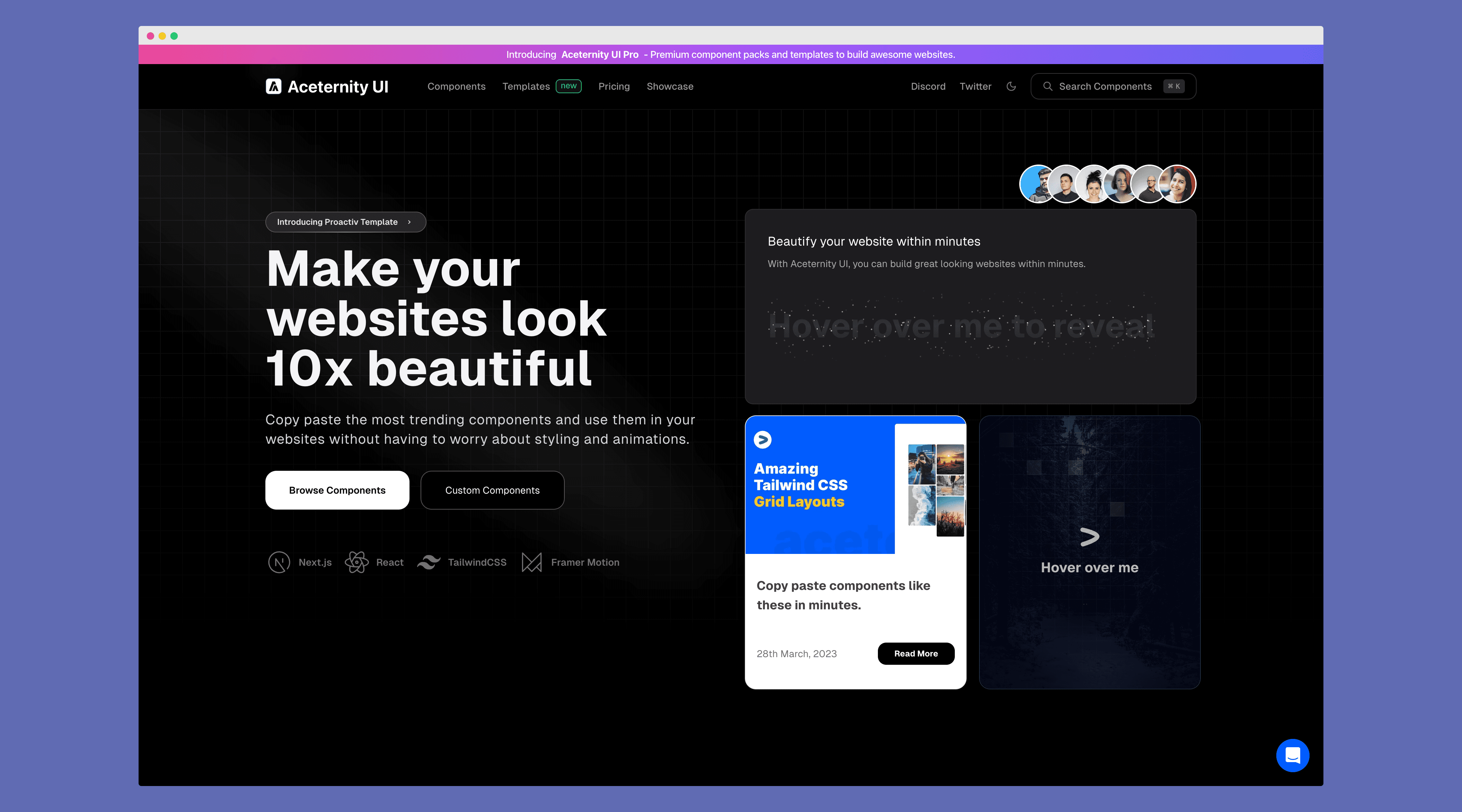
His journey, however, didn’t start with a grand business idea—it began with a side project he tinkered with in his free time. Fast forward, and Manu now runs Aceternity, a web design and development studio serving clients worldwide. With his latest product, Aceternity UI Pro, he’s already hit over $80K in revenue, just two months after launch.
Manu is a developer who’s making waves by creating tools that solve real problems for other developers. His flagship product, Aceternity UI, is a component library filled with design elements that developers can use to build web pages faster.
(Aceternity UI landing page)

His journey, however, didn’t start with a grand business idea—it began with a side project he tinkered with in his free time. Fast forward, and Manu now runs Aceternity, a web design and development studio serving clients worldwide. With his latest product, Aceternity UI Pro, he’s already hit over $80K in revenue, just two months after launch.
A Hobby That Turned into a Business
A Hobby That Turned into a Business
The idea behind Aceternity UI was born from Manu’s hobby of creating visually appealing web components. He enjoyed experimenting with code to build sleek, polished elements for his own projects. Initially, he shared these as part of blog posts, detailing how each component was built. But he soon realized that his audience wasn’t reading his blog—they were interested in the components themselves.
So, Manu made a pivot. He decided to make things simple for his users by offering a “copy-paste” solution: just the components, ready to go, no need to wade through lengthy tutorials. He called this new product Aceternity UI and launched it with a lean set of seven components. It didn’t take long for his work to gain traction on Product Hunt and Twitter, where developers started noticing and using Aceternity UI.
The idea behind Aceternity UI was born from Manu’s hobby of creating visually appealing web components. He enjoyed experimenting with code to build sleek, polished elements for his own projects. Initially, he shared these as part of blog posts, detailing how each component was built. But he soon realized that his audience wasn’t reading his blog—they were interested in the components themselves.
So, Manu made a pivot. He decided to make things simple for his users by offering a “copy-paste” solution: just the components, ready to go, no need to wade through lengthy tutorials. He called this new product Aceternity UI and launched it with a lean set of seven components. It didn’t take long for his work to gain traction on Product Hunt and Twitter, where developers started noticing and using Aceternity UI.
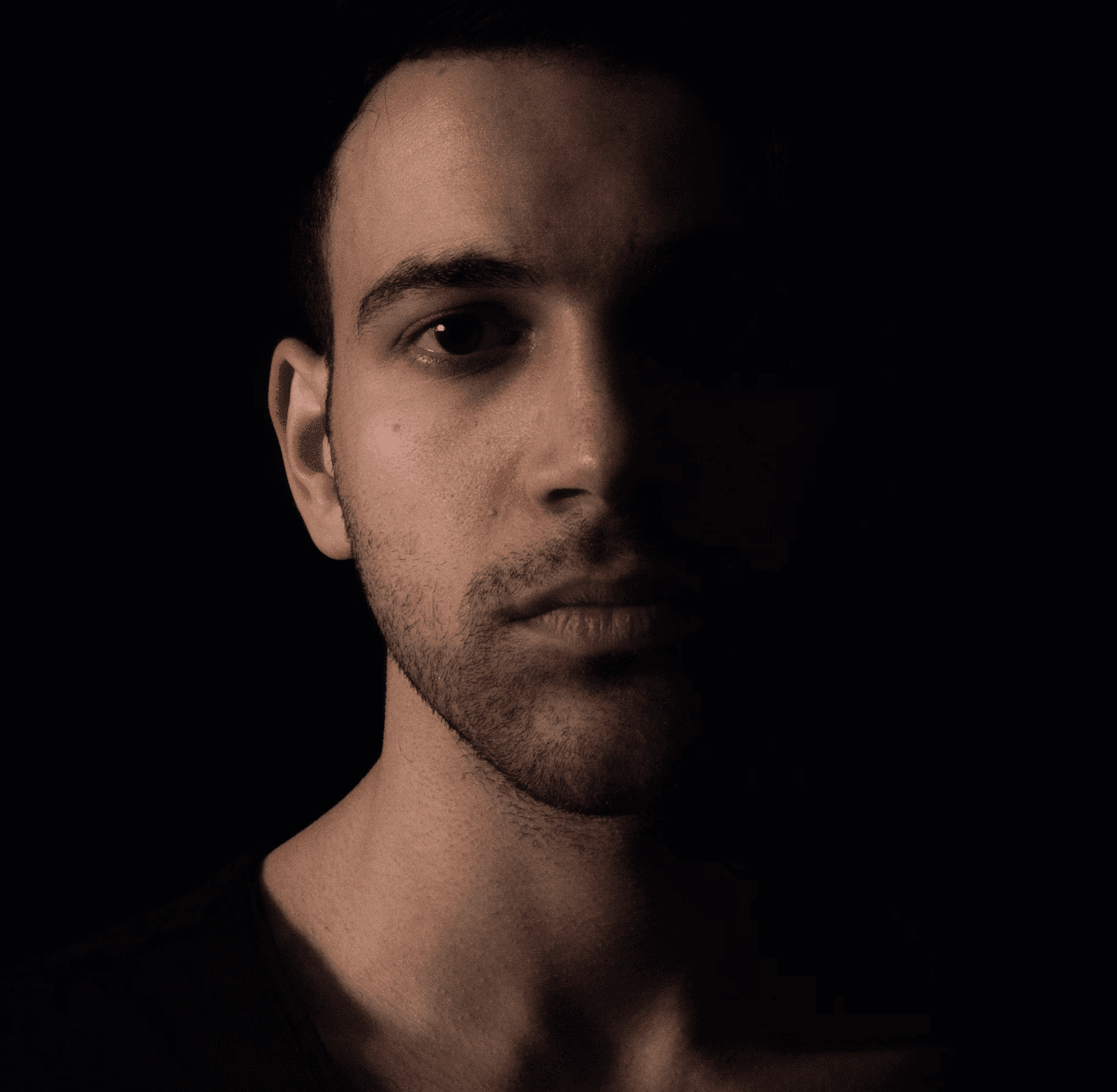




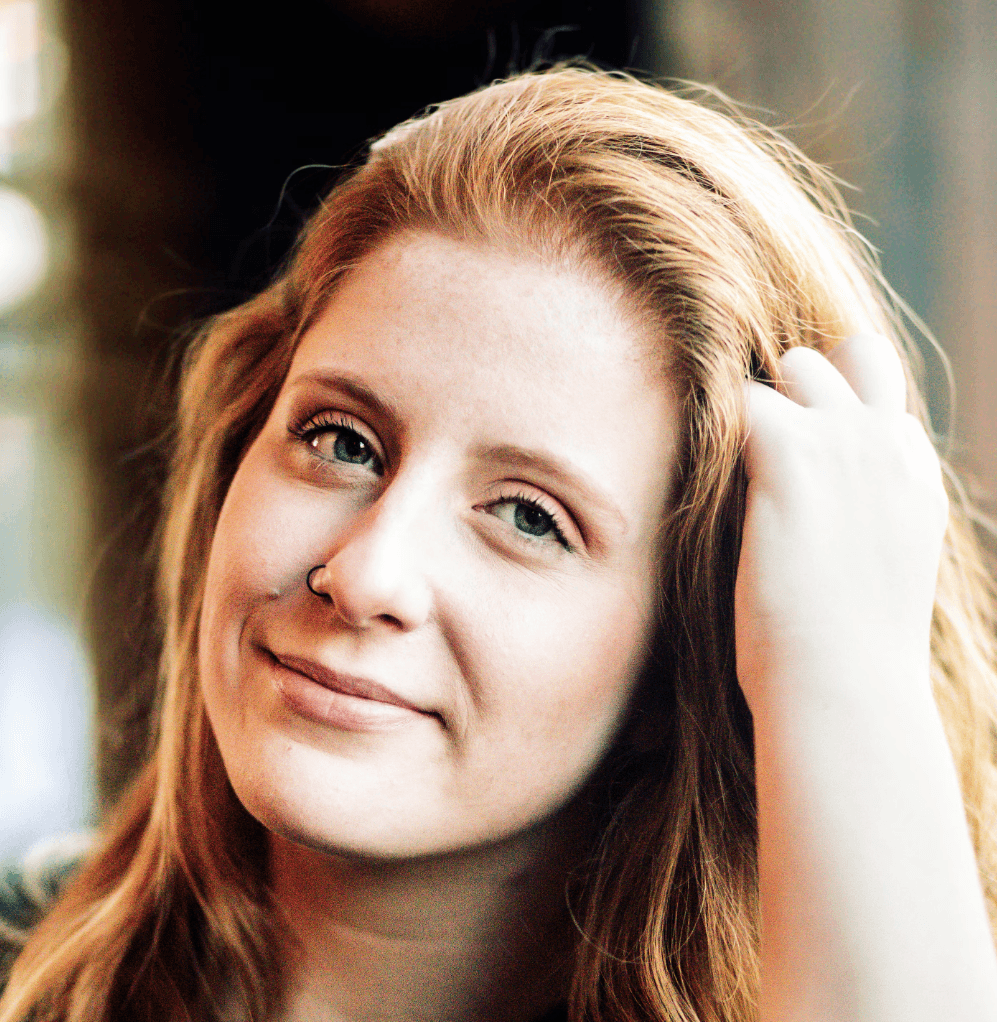











2,678+ people enjoy it
➤ Every week, we dig up stories of how regular people started and grew their businesses—
➤ Plus the marketing hacks that won them customers.
➤ Then, we share those insights with you.
➤ Every week, we dig up stories of how regular people started and grew their businesses—
➤ Plus the marketing hacks that won them customers.
➤ Then, we share those insights with you.
The Initial Launch: Starting Small and Gathering Feedback
The Initial Launch: Starting Small and Gathering Feedback
Instead of spending months perfecting every detail, Manu decided to “build fast, launch fast.” He knew he could spend forever optimizing things that might not even matter to his users. So, he set up a basic website using tools he knew well: Next.js, Tailwind CSS, and Framer Motion. He launched the product and opened up feedback channels immediately, so he could make quick improvements based on real user input.
“Build. Build. Build,” Manu says. “It’s better to write bad code than to overthink and end up with code that no one is going to use. Your customers don’t care about code quality.” For him, the goal was simple: get the product out there, test its appeal, and refine it along the way.
This rapid development approach worked wonders. As he released updates and expanded the component library, the user base grew—and so did the feedback. He doubled down on the features his customers wanted most, which accelerated Aceternity UI’s growth.
(Aceternity UI’s website visits last month)
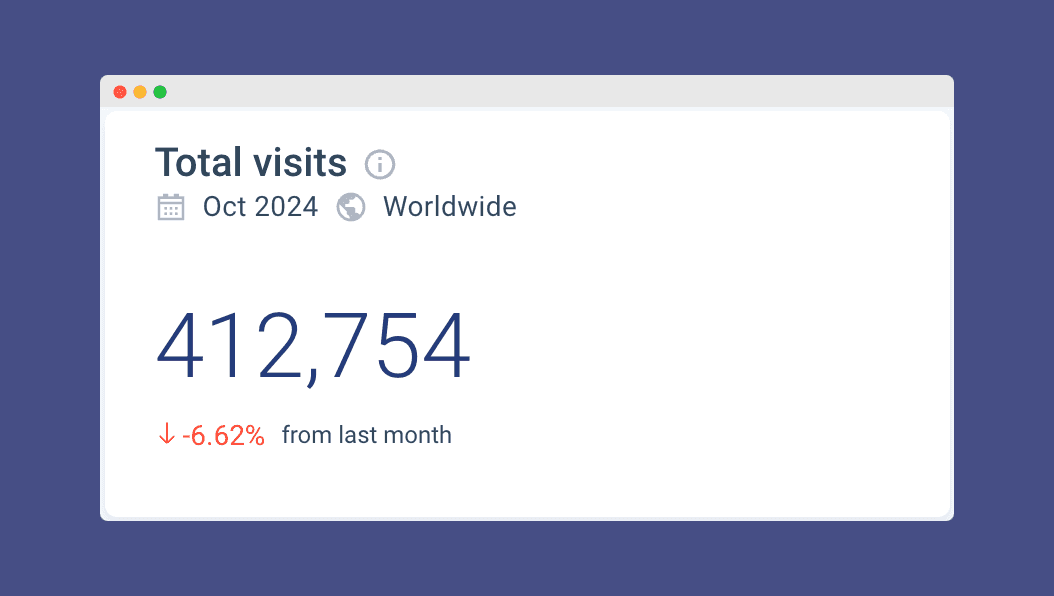
Here’s how Manu describes the first version of Aceternity UI:
Start with Value – His initial idea was to make Aceternity UI highly accessible. To make it frictionless, he offered tons of value for free, so people could try it out without hesitation.
Build the Basics Quickly – With just a weekend’s work, Manu set up the initial website, added the first set of components, and launched.
Get it Out There – Once the product was live, he marketed it wherever he could—Twitter, Product Hunt, and communities where developers hang out.
Keep it Lean – At first, his only costs were hosting fees on Vercel ($20 per month). By building on a small budget, he kept financial risk low.
Keep the Product Simple – Instead of pairing each component with long blog posts, he offered them as standalone, ready-to-use pieces of code.
As Aceternity UI began to gain users, Manu stayed laser-focused on enhancing the component library. He constantly improved it based on feedback, knowing that his primary goal was to make life easier for developers who wanted fast, reliable solutions for building web pages.
Instead of spending months perfecting every detail, Manu decided to “build fast, launch fast.” He knew he could spend forever optimizing things that might not even matter to his users. So, he set up a basic website using tools he knew well: Next.js, Tailwind CSS, and Framer Motion. He launched the product and opened up feedback channels immediately, so he could make quick improvements based on real user input.
“Build. Build. Build,” Manu says. “It’s better to write bad code than to overthink and end up with code that no one is going to use. Your customers don’t care about code quality.” For him, the goal was simple: get the product out there, test its appeal, and refine it along the way.
This rapid development approach worked wonders. As he released updates and expanded the component library, the user base grew—and so did the feedback. He doubled down on the features his customers wanted most, which accelerated Aceternity UI’s growth.
(Aceternity UI’s website visits last month)

Here’s how Manu describes the first version of Aceternity UI:
Start with Value – His initial idea was to make Aceternity UI highly accessible. To make it frictionless, he offered tons of value for free, so people could try it out without hesitation.
Build the Basics Quickly – With just a weekend’s work, Manu set up the initial website, added the first set of components, and launched.
Get it Out There – Once the product was live, he marketed it wherever he could—Twitter, Product Hunt, and communities where developers hang out.
Keep it Lean – At first, his only costs were hosting fees on Vercel ($20 per month). By building on a small budget, he kept financial risk low.
Keep the Product Simple – Instead of pairing each component with long blog posts, he offered them as standalone, ready-to-use pieces of code.
As Aceternity UI began to gain users, Manu stayed laser-focused on enhancing the component library. He constantly improved it based on feedback, knowing that his primary goal was to make life easier for developers who wanted fast, reliable solutions for building web pages.
The Power of a Strong Launch
The Power of a Strong Launch
When it came time to launch, Manu took a two-pronged approach: he promoted Aceternity UI on Twitter and Product Hunt. Product Hunt brought in his first round of users, but Twitter helped spread the word quickly. Soon, big names in the tech community, like YouTuber Fireship, noticed his product, giving it a boost.
(Fireship's youtube post)

But the real growth engine was word of mouth. Aceternity UI users were so impressed with the components that they started recommending it to colleagues and within their own networks. Manu’s audience grew to 22,000 Twitter followers, creating a natural distribution channel for his future launches.
After four months, he launched Aceternity UI Pro, which offered premium features and components for a fee. Thanks to his already loyal following, he was able to launch Aceternity UI Pro with minimal friction, and the product has continued to grow ever since.
(Aceternity UI Pro landing page)
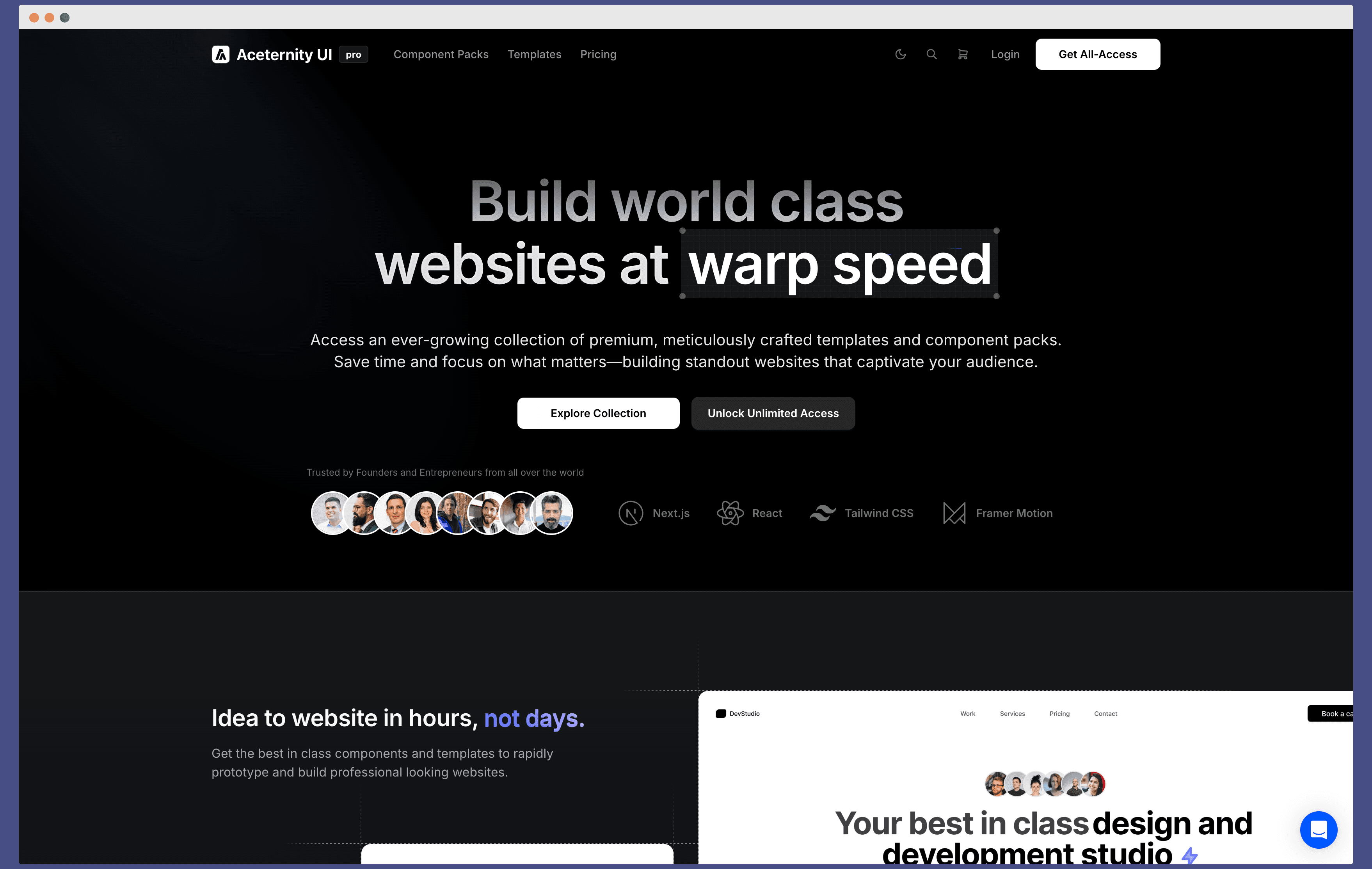
When it came time to launch, Manu took a two-pronged approach: he promoted Aceternity UI on Twitter and Product Hunt. Product Hunt brought in his first round of users, but Twitter helped spread the word quickly. Soon, big names in the tech community, like YouTuber Fireship, noticed his product, giving it a boost.
(Fireship's youtube post)

But the real growth engine was word of mouth. Aceternity UI users were so impressed with the components that they started recommending it to colleagues and within their own networks. Manu’s audience grew to 22,000 Twitter followers, creating a natural distribution channel for his future launches.
After four months, he launched Aceternity UI Pro, which offered premium features and components for a fee. Thanks to his already loyal following, he was able to launch Aceternity UI Pro with minimal friction, and the product has continued to grow ever since.
(Aceternity UI Pro landing page)

Landing Those First Customers
Landing Those First Customers
Manu’s first paying customers found him online, many of them through referrals. Since he’s a developer with a startup mindset—ready to push code, take feedback, and work flexibly—he naturally attracted similar-minded clients. One of his first big clients was John Shahawy, a founder who became an influential mentor in Manu’s life. John taught him essential lessons about business, and together they worked on projects that strengthened Manu’s skills as both a developer and a business owner.
Building relationships has been a vital growth strategy for Manu. His commitment to delivering value early on helped him attract clients who trusted him enough to refer his services to others.
Manu’s first paying customers found him online, many of them through referrals. Since he’s a developer with a startup mindset—ready to push code, take feedback, and work flexibly—he naturally attracted similar-minded clients. One of his first big clients was John Shahawy, a founder who became an influential mentor in Manu’s life. John taught him essential lessons about business, and together they worked on projects that strengthened Manu’s skills as both a developer and a business owner.
Building relationships has been a vital growth strategy for Manu. His commitment to delivering value early on helped him attract clients who trusted him enough to refer his services to others.
Scaling the Team and Growing the Brand
Scaling the Team and Growing the Brand
Today, Aceternity is a six-person team, which includes front-end and full-stack engineers, a designer, a social media manager, and a product manager. As demand grew, Manu realized he couldn’t keep up with everything himself. Hiring his first full-time employee was a big milestone, allowing him to focus more on improving Aceternity UI.
Now, Manu’s primary focus is building out Aceternity UI Pro and expanding Aceternity’s brand. His team is working on search engine optimization (SEO), content marketing through YouTube, and building a presence on Twitter/X.
His advice? Share everything—wins, losses, learnings. By being transparent and sharing his journey, he’s built a community of supporters who are invested in his success.
Today, Aceternity is a six-person team, which includes front-end and full-stack engineers, a designer, a social media manager, and a product manager. As demand grew, Manu realized he couldn’t keep up with everything himself. Hiring his first full-time employee was a big milestone, allowing him to focus more on improving Aceternity UI.
Now, Manu’s primary focus is building out Aceternity UI Pro and expanding Aceternity’s brand. His team is working on search engine optimization (SEO), content marketing through YouTube, and building a presence on Twitter/X.
His advice? Share everything—wins, losses, learnings. By being transparent and sharing his journey, he’s built a community of supporters who are invested in his success.
Lessons Learned and Advice for Aspiring Founders
Lessons Learned and Advice for Aspiring Founders
Starting and scaling Aceternity has taught Manu several invaluable lessons. Here are some of his top takeaways for anyone looking to build their own business:
Listen to Your Customers – Go out of your way to talk to your customers. Be present in support chats and actively seek feedback.
Give Without Expectations – Offer value freely. You’ll see compounding effects as people begin to trust your brand.
Polish the Product – A clean, user-friendly interface can set you apart from the competition. A little extra effort in design and UX can position you as an expert.
Build Without Overthinking – It’s better to have something “good enough” out there than to get stuck striving for perfection.
Embrace Criticism – Accept feedback openly and use it to improve.
Starting and scaling Aceternity has taught Manu several invaluable lessons. Here are some of his top takeaways for anyone looking to build their own business:
Listen to Your Customers – Go out of your way to talk to your customers. Be present in support chats and actively seek feedback.
Give Without Expectations – Offer value freely. You’ll see compounding effects as people begin to trust your brand.
Polish the Product – A clean, user-friendly interface can set you apart from the competition. A little extra effort in design and UX can position you as an expert.
Build Without Overthinking – It’s better to have something “good enough” out there than to get stuck striving for perfection.
Embrace Criticism – Accept feedback openly and use it to improve.
Final Thoughts
Final Thoughts
For Manu, the journey to building a successful business is about staying authentic and being open. By putting himself and his product out there, he’s built a community that’s supportive and engaged in his work.
“Put your authentic self out there,” he says. “You will find people that resonate with that and will stick with you through thick and thin”
Currently Manu Makes
$40K from Aceternity UI Pro
About $30K from Aceternity web design services
With consistent revenue growth, Manu’s team is now pushing to reach $100K in monthly recurring revenue (MRR) by next year. His long-term goal is to build Aceternity into a leading web development studio known for high-quality tools and services.
P.S. I’ve got a weekly newsletter where I share stories about founders who have started successful online businesses, growth strategies, business ideas, and tips to start/grow your own business. I would love for you to join here
Shoot me a DM if you want to share your story or visit this page to submit your information 💌
- h/t Harkirat Singh, Starter story, Rahul Gupta ⇢ Great resources
For Manu, the journey to building a successful business is about staying authentic and being open. By putting himself and his product out there, he’s built a community that’s supportive and engaged in his work.
“Put your authentic self out there,” he says. “You will find people that resonate with that and will stick with you through thick and thin”
Currently Manu Makes
$40K from Aceternity UI Pro
About $30K from Aceternity web design services
With consistent revenue growth, Manu’s team is now pushing to reach $100K in monthly recurring revenue (MRR) by next year. His long-term goal is to build Aceternity into a leading web development studio known for high-quality tools and services.
P.S. I’ve got a weekly newsletter where I share stories about founders who have started successful online businesses, growth strategies, business ideas, and tips to start/grow your own business. I would love for you to join here
Shoot me a DM if you want to share your story or visit this page to submit your information 💌
- h/t Harkirat Singh, Starter story, Rahul Gupta ⇢ Great resources
People Also Ask
People Also Ask
What is Aceternity?
Aceternity is a web design and development studio. It offers a range of services and products designed to make web development easier and more efficient for developers.
Who is the founder of Aceternity?
The founder of Aceternity is Manu, a developer with over seven years of experience in building digital products and web apps. Manu’s mission is to create tools that solve real-world problems, focusing on helping developers and small businesses by providing them with resources to launch and grow their online presence.
Is Aceternity UI good?
Yes, Aceternity UI has been highly praised by its users for being an easy-to-use, versatile component library. It offers a wide range of pre-designed components that can be integrated quickly into any web project, saving developers time and effort.
Is Aceternity UI free?
Yes, Aceternity UI offers a free version with a variety of components that anyone can use. For those looking for more advanced features and premium components, there’s also a paid version called Aceternity UI Pro.
What is Aceternity?
Aceternity is a web design and development studio. It offers a range of services and products designed to make web development easier and more efficient for developers.
Who is the founder of Aceternity?
The founder of Aceternity is Manu, a developer with over seven years of experience in building digital products and web apps. Manu’s mission is to create tools that solve real-world problems, focusing on helping developers and small businesses by providing them with resources to launch and grow their online presence.
Is Aceternity UI good?
Yes, Aceternity UI has been highly praised by its users for being an easy-to-use, versatile component library. It offers a wide range of pre-designed components that can be integrated quickly into any web project, saving developers time and effort.
Is Aceternity UI free?
Yes, Aceternity UI offers a free version with a variety of components that anyone can use. For those looking for more advanced features and premium components, there’s also a paid version called Aceternity UI Pro.
Boost your business visibility to thousands of engaged readers!
Get Featured on 100+ pages across the FounderNoon website.
One month stretch ⇢ $100
Three-month stretch ⇢ $250
Boost your business visibility to thousands of engaged readers!
Get Featured on 100+ pages across the FounderNoon website.
One month stretch ⇢ $100
Three-month stretch ⇢ $250
